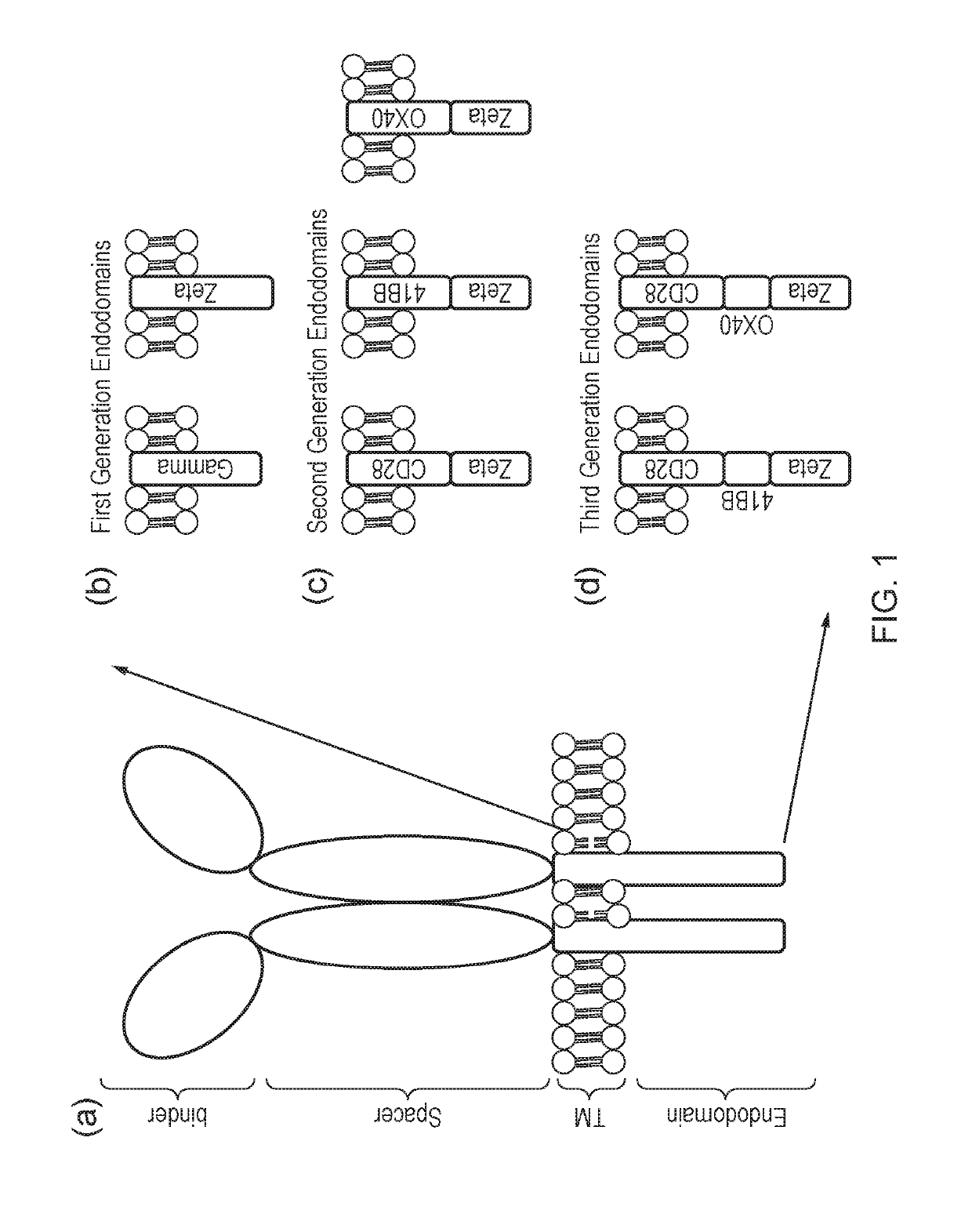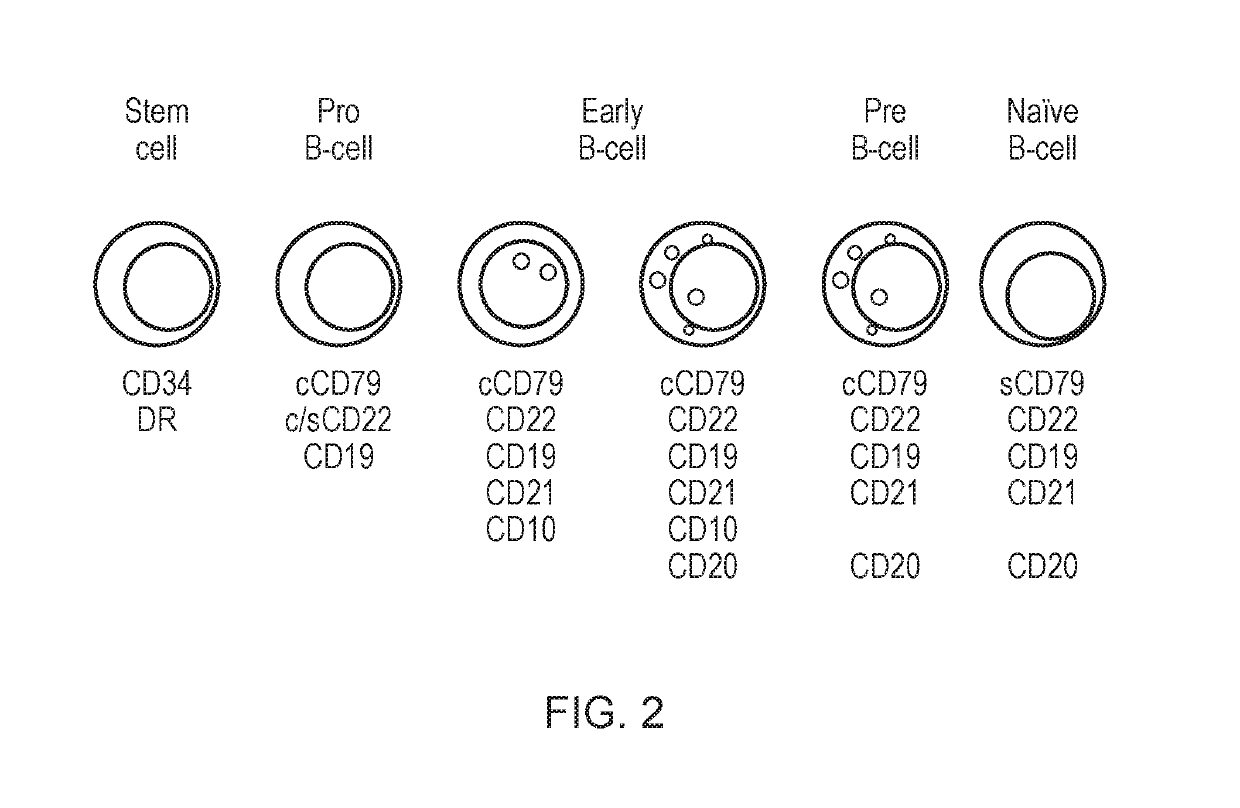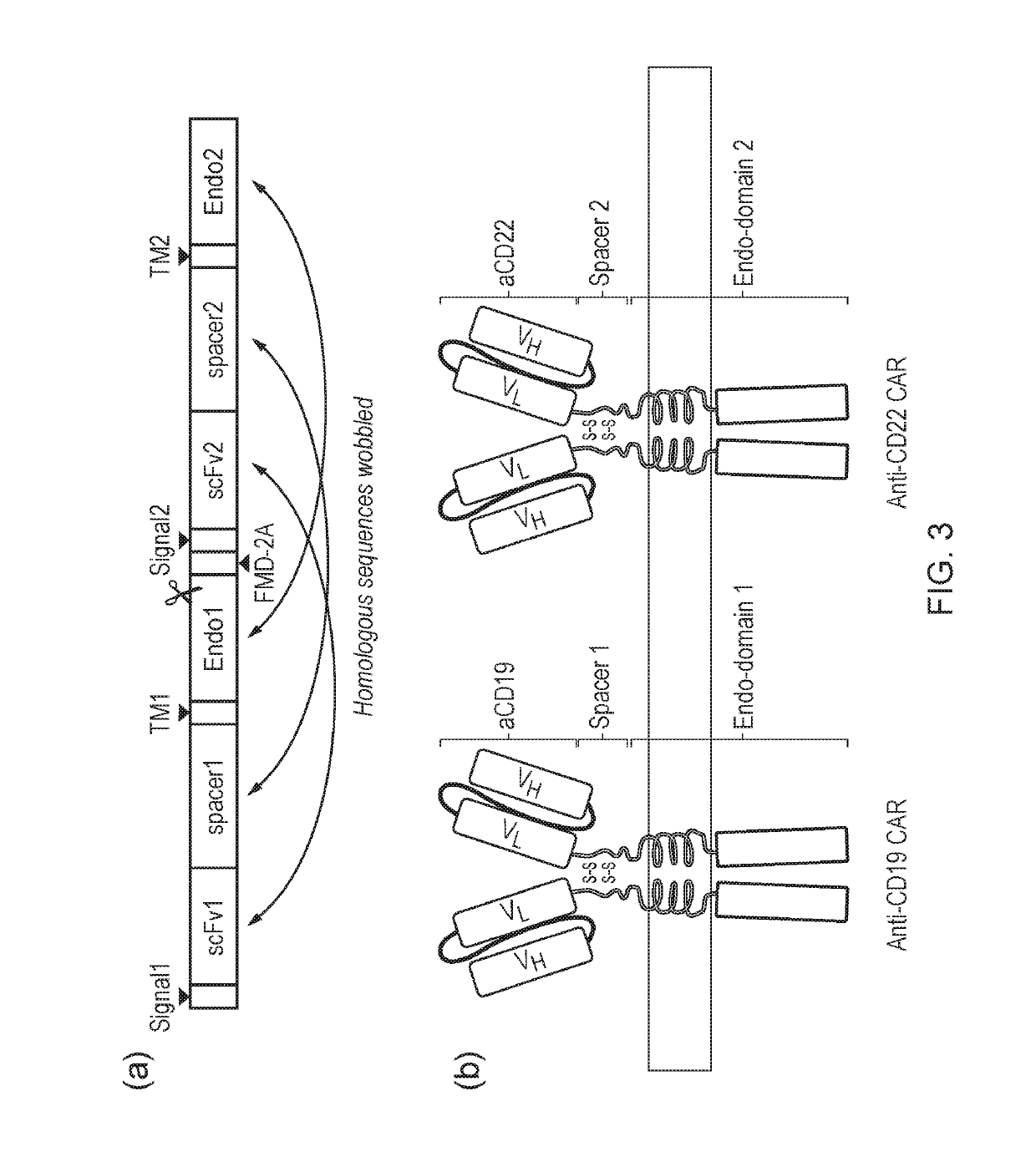Tunable Chimeric Antigen Receptors
a technology of chimeric antigen receptors and receptors, which is applied in the superfamily of ngf receptors/tnf receptors, blood/immune system cells, animals/human proteins, etc., can solve problems such as escape from car treatment, and achieve the effects of reducing the problem of cancer escape, simple single transduction procedure, and more integration sites
- Summary
- Abstract
- Description
- Claims
- Application Information
AI Technical Summary
Benefits of technology
Problems solved by technology
Method used
Image
Examples
example 1
Concept of a CD19 / CD22 Logical ‘OR’ Gate
[0407]A CD19 ‘OR’ CD22 CAR gate was constructed by co-expression of a CD19 and a CD22 CAR in the same vector. The anti-CD19 binder was a scFv derived from the re-surfaced B4 antibody (Roguska et al. (1996) Protein Eng. 9, 895-904), and the anti-CD22 binder was a scFv derived from the humanized RFB4 antibody. A human IgG1 hinge-CH2-CH3 spacer was used for both CARs, the coding sequence of which was codon-wobbled to avoid homologous recombination by the integrating vector. The TM domain in both CARs was derived from that of CD28, and both CAR endodomains comprised of CD3-Zeta. Once again, these homologous sequences were codon-wobbled. Co-expression was achieved by cloning the two CARs in frame separated by a FMD-2A peptide. The amino acid sequence of the CD19 / CD22 ‘OR’ gate construct is shown as SEQ ID NO: 49.
SEQ ID NO: 49MSLPVTALLLPLALLLHAARPYPYDVPDYASLSGGGGSQVQLVQSGAEVKKPGASVKVSCKASGYTFTSNWMHWVRQAPGQGLEWMGEIDPSDSYTNYNQKFKGRVTITVDKSASTAYMELSSLR...
example 2
ation and Characterisation of CD19ALAb and CD22ALAb
[0410]A CD19-binder (CD19ALAb) was identified, humanised and the binding affinities of both murine and humanised IgGs and scFvs were identified and compared with the “gold-standard” anti-CD19 binder, fmc63. In parallel, and a CD22-binder (CD22ALAb) was identified, humanised and the binding affinities of both murine and humanised IgGs and scFvs were identified and compared with the “gold-standard” anti-CD22 binder, M971.
[0411]Experiments were performed on a Biacore T200 instrument using HBS-P as running and dilution buffer. BIAevaluation software Version 2.0 was used for data processing. For binding kinetics, mouse anti-human IgG or goat anti-mouse IgG was covalently coupled to a CM5 Sensor Chip. IgG or scFv-Fc proteins were captured, and various concentrations of interaction partner protein injected over the flow cell at a flow rate of 30 μl / min. Kinetic rate constants were obtained by curve fitting according to a 1:1 Langmuir bindi...
example 3
ve Functional Assays with CD19ALAb / Fmc63 CARs and CD22ALAb / M971 CARs
[0415]The antigen binding domain of a CAR can affect its function. In this study, CARs were created comprising CD19ALAb and CD22ALAb and function was compared with an equivalent CAR having an antigen-binding domain based on fmc63 or M971.
[0416]CARs comprising scFvs based on fmc63 (anti-CD19) and M971 (anti-CD22) can be considered as the gold standard antibodies as both CARs are in clinical development.
[0417]CARs were constructed and expressed based on CD19ALAb, fmc63, CD22ALAb and M971. Their structure is shown in FIG. 9. The CARs differed solely in their antigen binding domain. In all constructs, the binding domains were linked to the membrane with a CD8 stalk spacer and contained intracellular activatory motifs from 41BB and CD3-zeta.
[0418]Retroviruses were produced by transient transfection of 293T cells with plasmids encoding the CARs, gag / pol and the envelope protein RD114. After 3 days the supernatants were ha...
PUM
| Property | Measurement | Unit |
|---|---|---|
| molecular weight | aaaaa | aaaaa |
| molecular weight | aaaaa | aaaaa |
| molecular weight | aaaaa | aaaaa |
Abstract
Description
Claims
Application Information
 Login to View More
Login to View More - R&D
- Intellectual Property
- Life Sciences
- Materials
- Tech Scout
- Unparalleled Data Quality
- Higher Quality Content
- 60% Fewer Hallucinations
Browse by: Latest US Patents, China's latest patents, Technical Efficacy Thesaurus, Application Domain, Technology Topic, Popular Technical Reports.
© 2025 PatSnap. All rights reserved.Legal|Privacy policy|Modern Slavery Act Transparency Statement|Sitemap|About US| Contact US: help@patsnap.com



